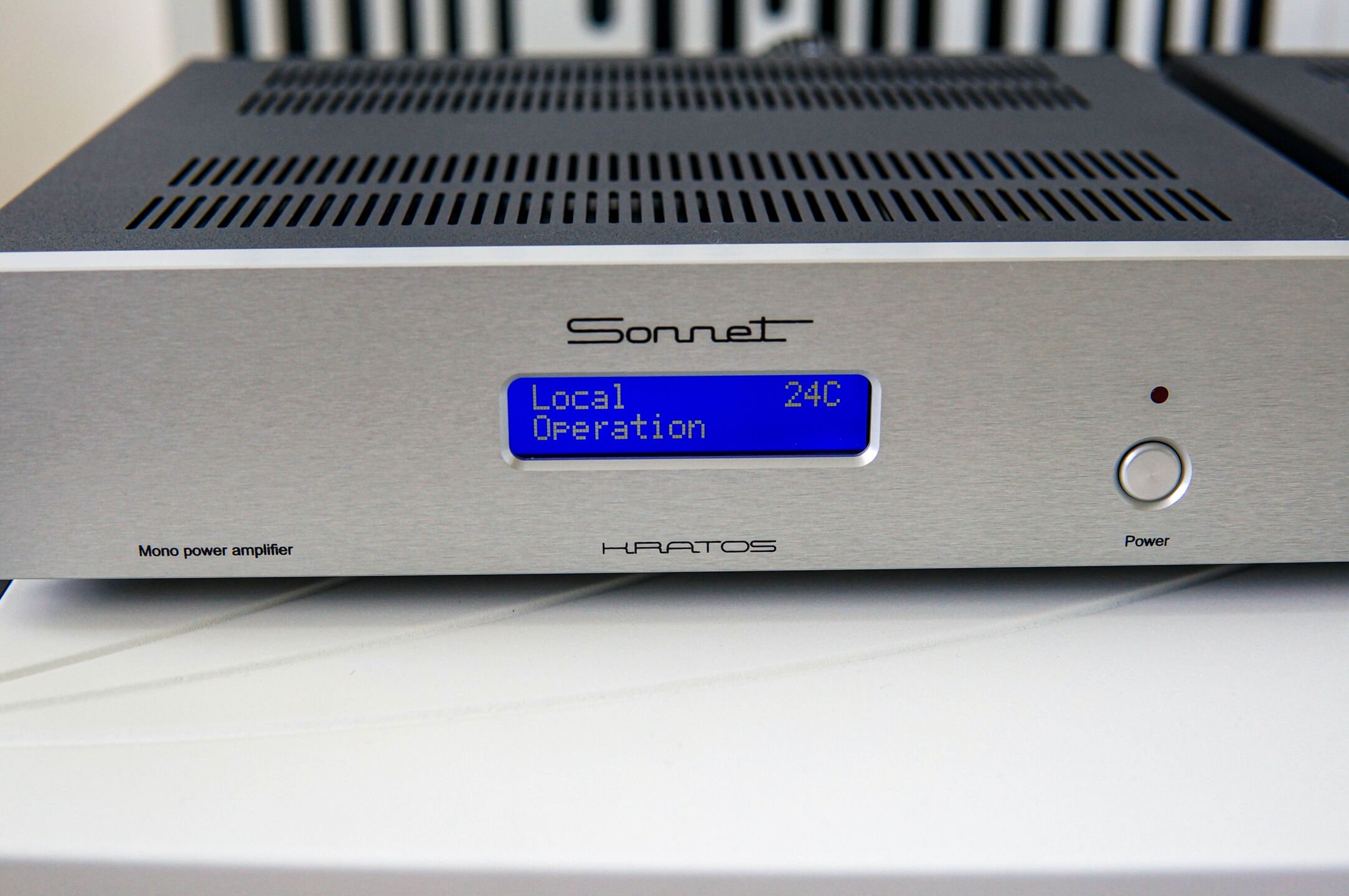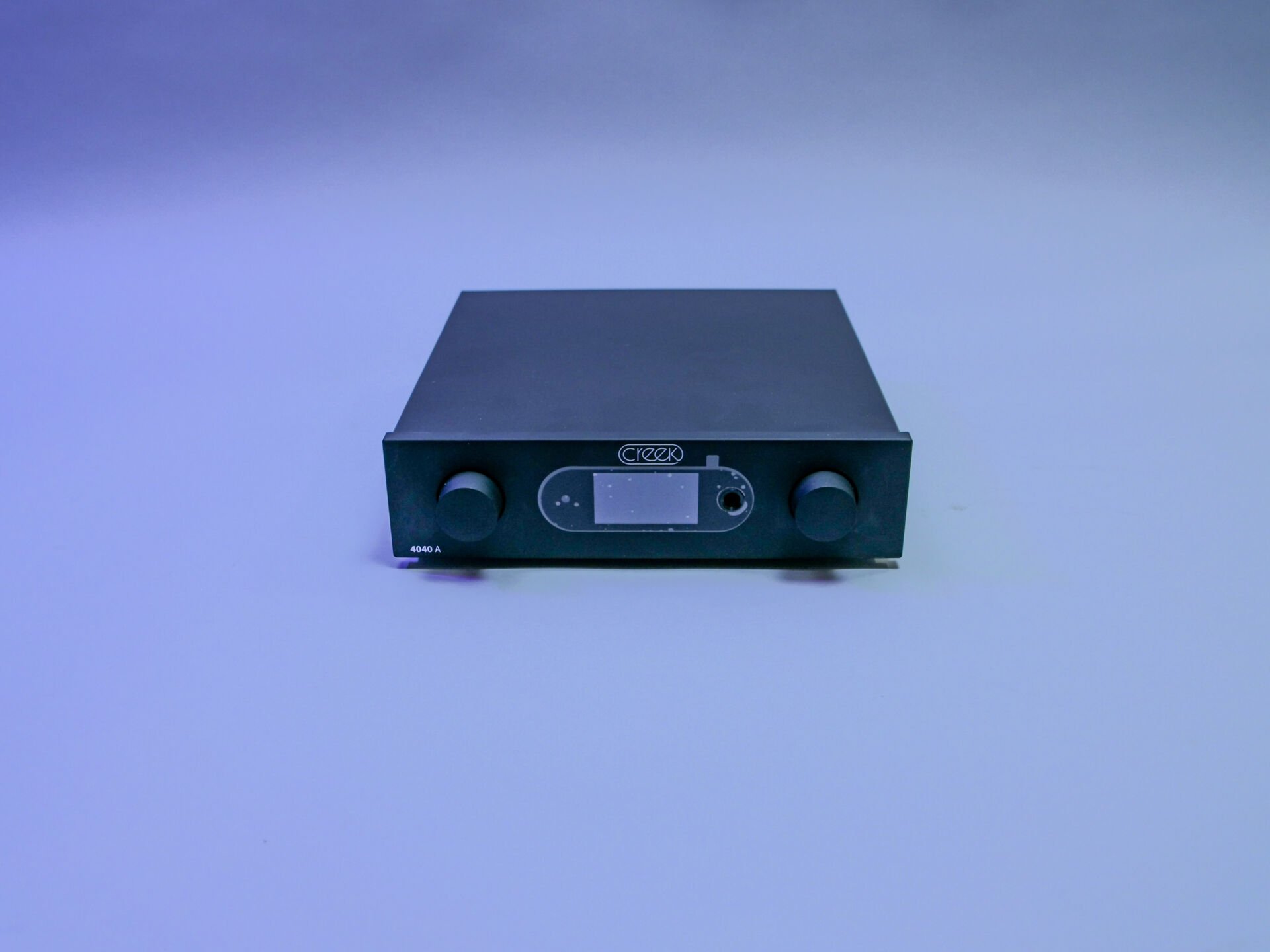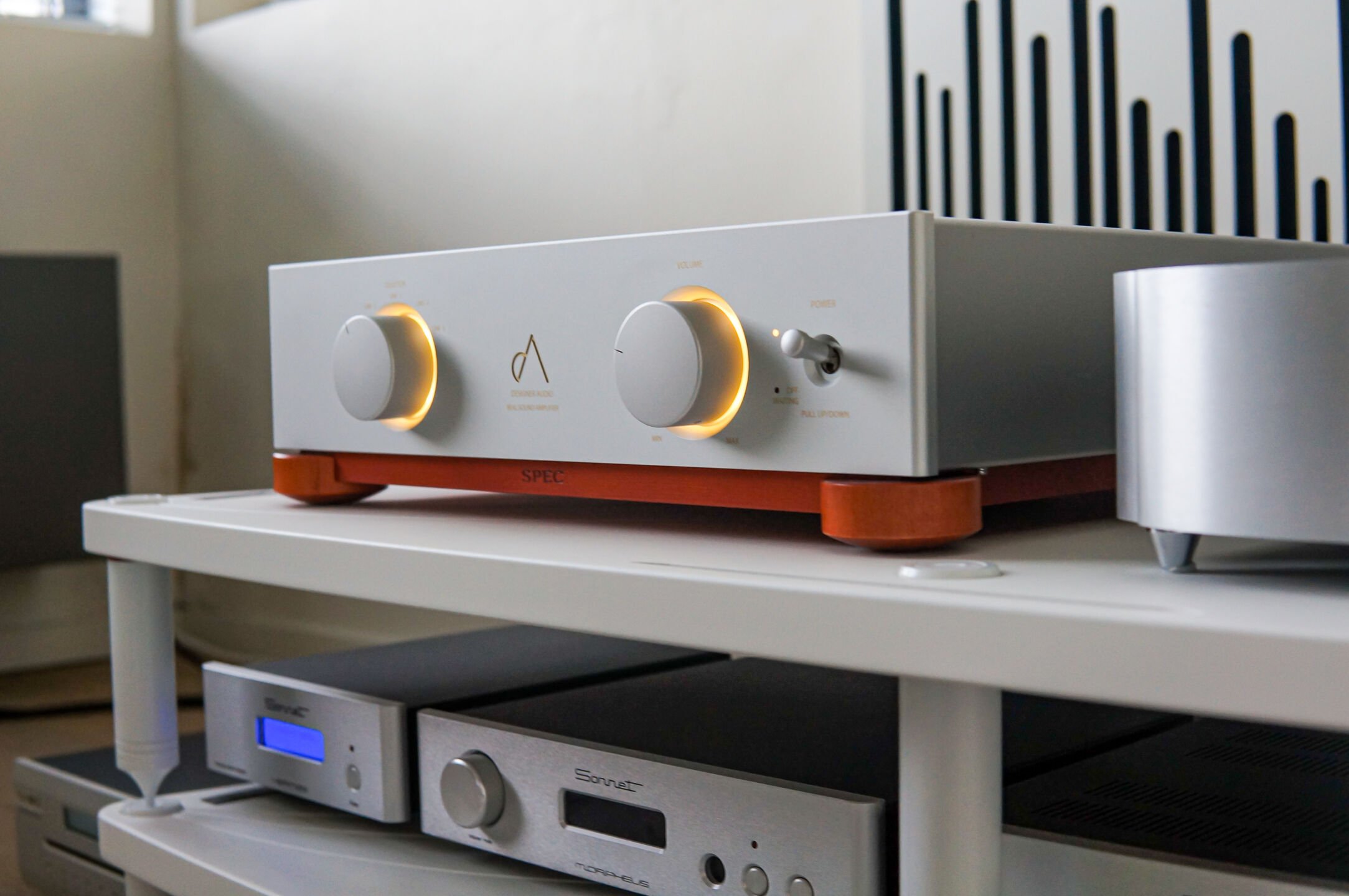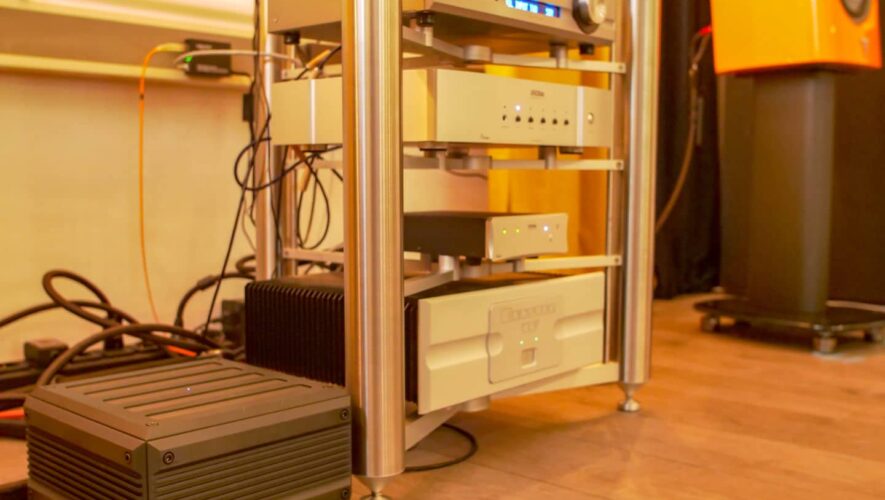

Technical
Contents
Technique

The rear panel is the same look, feel and functionality as the 3B3. At the top we find three switches, where the left one switches the sensitivity from -23 dB to -29 dB. This is a blessing when using preamplifiers with a different amplitude of the output signal. The middle switch is for ‘bridging’ the Bryston 4B3. The input step is switched so that the 4B can be used as a 1000 Watt monoblock sample. With the right switch we can switch between balanced and single-ended control. At the bottom right we find a connection for a remote cable, with which we can switch the power amplifier on and off remotely. On the left side of this terminal block a switch is included with which we can activate or deactivate this remote connection. The speaker connections are solid and accommodate banana jacks and spades. However, these spades can only be inserted from the top. Too bad. Can sometimes be a bit tricky in practice. Well, we’re mosquito sifters.
The black switch at the bottom left of the middle is not a normal power switch, but a so-called circuit breaker. This must always be in the on position, otherwise the Bryston 4B won’t start up and will shoot directly into the protection. To the right of the circuit breaker we find a status LED. Depending on the status of the amplifier, it constantly lights up red or flashing green (normal). If it flashes red, something’s not right. When the LED lights up constantly red (standby), the power switch on the front can be pressed. The unit now makes a series of click sounds which it uses to largely reduce the power-up peak. The two LEDs on the front first light up red (protection) and when the amplifier has stabilized itself, they turn green. Now the unit is operational. Now this LED on the rear panel will also briefly light up green. The two LEDs on the front also serve as clipping indicators, but in practice they will not change colour quickly.
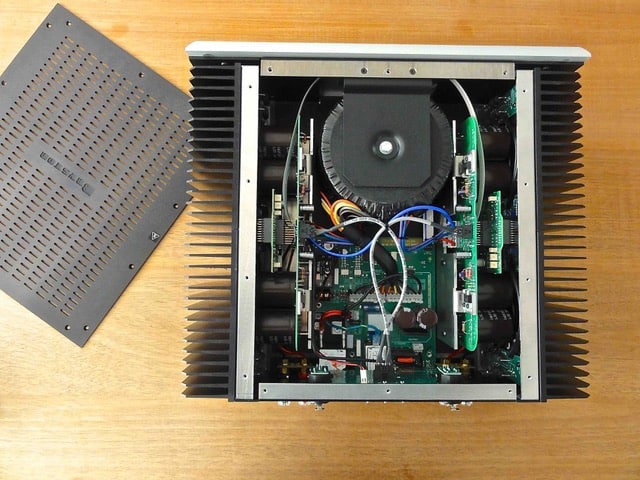
When we light the lid we find a nicely organized and symmetrical whole. Two lead-heavy stacked toroidal transformers provide a left and right separate power supply. Furthermore, the 4B3 is neatly modular and dual mono built with optically large parallels to the construction of previous generations. It strikes us that the point-to-point cabling on the Bryston 4B3 has been reduced, obviously in order not to adversely affect the sound characteristics. In addition, the manufacturer has frequently opted for SMD technology. Apparently an SMD bath no longer has any adverse effects on the life span of the minuscule SMD components. Not unimportant is the degree of shielding of this new 4B3. As we have already recommended for several new Bryston components, this 4B3 is also equipped with blank contact surfaces on the fitting surfaces of the housing. These are clearly visible on the photo. This creates a Faraday cage and helps ensure that the internal components are optimally shielded for RFI signals.





